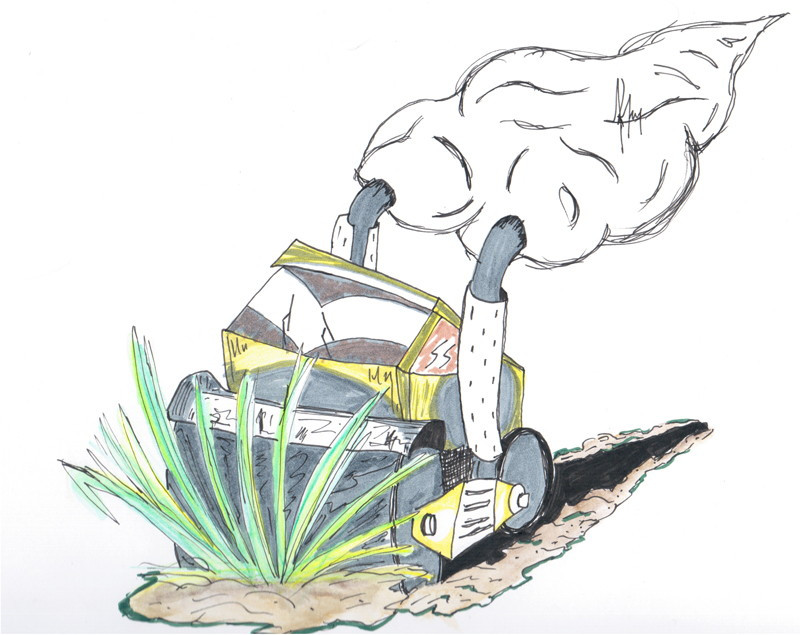Of progress and the tall grass prairie
In Manitoba, tall grass prairie ecosystems once covered much of the southern third of the province, encompassing 6,000 square kilometers. Less than one per cent of this total remains today.
This past summer, the University of Winnipeg chose to acknowledge our province’s environmental heritage with a native prairie garden on campus. If you visit it now – just a few months after its inception – you will find only fresh green sod.
As part of university expansion plans, the university is establishing a green corridor between the main campus and the new Science Complex and Richardson College for the Environment.
This corridor was originally planned to include a garden of native prairie plants, including species such as big bluestem and purple coneflower.
U of W undergraduate student Carla Church and master’s candidate Christa Rigney noticed the fledgling garden in the campus bus loop in spring. Both were conducting researched on the threatened Dakota Skipper butterfly, which is found in Manitoba prairies.
For them, the garden was more than an aesthetically pleasing addition to campus.
“Our research involves prairie plants that are difficult to identify, so we would look in the garden to verify our identification,” Rigney said. “The plants were still becoming established, but the garden was really coming along.”
Carla Church was surprised, and shocked, when the fledgling garden suddenly disappeared.
“One day when I was walking by it was just gone,” she said. “There were signs that said Native Prairie Garden in Progress, but by that time it was just grass. If the university is so set on sustainability, why are we taking plants from an endangered ecosystem, and turning them into sod?”
The garden was turfed at the behest of the U of W president’s office because of feedback from green-corridor donors. It had not even been allowed a full summer to establish.
Arguably, one little prairie garden wouldn’t change much to reverse the destruction of an entire ecosystem; but it would raise awareness. After all, most of Manitoba’s threatened, endangered, and extirpated species historically relied on tall grass prairie ecosystems for their habitats.
In Canada and the United States, the main group behind preserving the prairie is the Nature Conservancy. Locally, the Nature Conservancy works with the Manitoba Naturalists’ Society to found the Tall Grass Prairie Preserve (TGPP) in southeastern Manitoba.
This area is a haven to species at risk, such as the famous western prairie fringed orchid, visited by dozens of rare orchid hunters annually. Essentially, though, the preserve is just a few geographically separate tracts of land that – miraculously – escaped agriculture.
Jaimée Dupont, a master’s candidate at the U of W, has been researching the threatened Powesheik Skipperling butterfly, which requires tall grass prairie to survive.
She emphasizes that though conserving these individual plots of land is important, it isn’t enough to prevent species loss.
“What we do have left of the tall grass prairie is incredibly small and fragmented. Just little pockets remain,” she said. “If we wipe out one section, there is no way that repopulation can occur by natural means because there are no corridors connecting these areas.”
We Manitobans have happily destroyed the tall grass prairie for various reasons. One of which is, ironically enough, to grow grains, the likes of which are sold at the beloved Tall Grass Prairie Bakery.
Let’s do our part and visit the Living Prairie Museum on Ness Avenue, take a hike or wild edible adventure in the TGPP, use native prairie plants at home, and tell the U of W administration to get the sod off the garden.
Alana Westwood is an evening-and-weekends philosopher, and a full-time bitter conservationist.
Published in Volume 65, Number 5 of The Uniter (September 30, 2010)








